In the mythological lore, Ruler of the system is sun, the giver of life. Its influence is vitalising, hot, dry and constructive. It governs the heart, vitality, blood and brain. The right eye in a male and the left eye in a female. Sun causes physical disorders and those arising from cold.
G.J. Von Leuchen aka Rheticus was the only pupil of N. Copernicus. After having spent two years with Copernicus in Frauenburg (Frombork) he went to Danzig where he published his Narratio Prima or the First Report (1540) which is still considered to be the best introduction to Copernicus' De revolutionibus orbium coelestium. In 1542 Rheticus traveled to Nuernberg to supervise the printing of the Copernicus' book by Johannes Petreius.
A short passage in his Narratio (p. 465,12; 462,22,35) is the best key unlocking the astrological taproot of De revolutionibus. In this passage he refers to the sun not only as God’s steward of nature and king of all distinguished with divine Majesty, but also explains that the sun, like the heart in a body, guides the stars: like a ruler who does not need to go to various towns in order to execute his official duty, so the heart does not have to go to head, to feet, or to other part of the body in order to sustain life. This was a perennial mantra of all heliocentric astrologers throughout the ages. Let me decode this passage for you.
At the end of his life Rheticus renounced his Copernicanism.
The Babylonian astrologers were describing the sun as the fiery heart of the world, which vivifies the whole of this great organism, and as the stars obey its command, it reigns supreme over the universe. The sun, set in the midst of the superimposed planets, regulates their harmonious movements. As its heat impels them forward, then draws them back, it is constantly influencing, according to its various aspects, the direction of their course and their action upon the earth. The radiance of its splendor illuminates the divine immensity of the heavens, but at the same time in its brilliance there is intelligence; it is the origin of all reason, and, as a tireless sower it scatters unceasingly on the world below the seeds of a harvest of souls. Our brief life is but a particular form of the universal life…
Theon of Smyrna, a contemporary of Ptolemy. After expressing his opinion that mercury and Venus may, after all, be revolving round the sun, he goes on to say that the sun should be called the heart of the universe, which is both “a world and an animal.” (...) the mathematical center of the universe is where the earth is, cold and immovable, but the center of the world as animal is in the sun, which is, so to say, the heart of the universe.
The final section of the Galileo's Letter to the Grand Duchess is devoted to the miracle of Joshua. Galileo first explains that the sun's rotation around its axis is the cause of all planetary motion. “And just as the motion of the heart should cease in an animal, all other motions of its members would also cease, so if the rotation of the sun were to stop, the rotation of all the planets would stop too.”
Gilbert physician to Queen Elizabeth I and James I believed that all heavenly bodies are endowed with magnetism. Kepler was to use this idea to explain the motion of the planets. He was well aware of the fact that the Latin term sidus, star is derived from Gr. Sideros, iron. Similarly the Provencal aran, iran, airan – iron – is etymologically connected with the Greek aryan meaning both “lodestone” and “rising sun”. The English term siderite means magnetic iron or lodestone. Cp. Galileo’s “Sidereus Nuncius” (Starry Messenger). Let me remind here that in an Assyrian love spell from ancient Iraq, iron filings placed on a woman’s genitals were supposed to attract her to a man who had similarly anointed himself with a mixture of powdered lodestone and oil. The sexual ingredient of Gilbert’s “magnetic coition” was set by Newton into his Third Law which sees forces as acting between two bodies, not as one body exerting a force on the other. He spoke of action and reaction, which he declared to be equal and opposite.
Ancient Egyptians expressed the same dogma as follows: “The heart is the center, its vessels lead to all the members; whether the doctor…lays his finger on the forehead, on the back of the head, on the hands, on the place of the stomach, on the arms, or on the feet, everywhere he meets with the heart (i.e. pulse) because its vessels lead to all the members.” The heart was therefore called also “the beginning of all the members.”
In explaining human disease, if everything else failed, one could always appeal to the influence of the stars on the elements, which accounts for the fact that a knowledge of astrology was still needed to qualify in medicine as late as the second half of the 18th century. Paracelsus used magnets to concentrate in his patients what he believed to be a cosmic fluid with healing properties. The four humors (fluids) or, the cardinal humors of the astrological medicine were blood. Phlegm, choler (yellow bile), and melancholo (black bile).
A popular encyclopedia of medieval heliocentric astrology compiled by M. Capella was titled The Marriage of Mercury and Philology (De nuptiis Philologiae et Mercurii). The celestial marriage described by M. Capella inspired two best-known scientists of the Renaissance era: Girolamo Fracastoro (1478-1553) physician and poet, and N. Copernicus (1473-1543) also physician, poet and astrologer. In his long poem, Fracastoro argues that the infecting semina of syphilis may arise from poisonous emanations sparked by planetary conjunctions. He even invokes a linguistic parallel between transmission of syphilis by sexual contact (coitus) and the production of bad seeds by planetary overlap in the sky, for he describes the astronomical phenomenon with the same word, as “coitum et conventum syderum” (the coitus and conjunction of stars), particularly our three most distant bodies: Saturn, Jupiter, and Mars. The term influenza came from the same astrological stable because it is derived from from the Latin fluxus, a flowing, flux. Interestingly Newton believed that the human body is pervaded by an invisible fluid that is responsive to planetary gravitation.
Maurice Samuel suggested that Jew-hatred sublimates the yearning of Christians for the freedoms of the pagan world ruled by the sun god seated on the throne in the middle of the planets. They resent Christian morality as the straight jacket that inhibits the release of their pagan instincts that emerge occasionally in their consciousness. Well, the Renaissance pandemic of syphilis followed the same pagan lewdness as the present pandemic of AIDS follows the destruction of moral inhibitions in sexual behavior in the wake of the Sex and Drugs Revolution. In a 1985 “New York Native” interview Joseph Sonnabend (“leading AIDS doctor”) invalidated Mosaic proscription of sodomy with his “expert”opinion as follows: “The rectum”, Sonnabend said, “is a sexual organ, and it deserves the respect a penis gets and a vagina gets.” Anal intercourse has been the central activity for gay men and for some women for all of history. One should add, with very tragic consequences. Because:
“The anus is not designed by nature to accommodate a penis without severe injury and the eventual destruction of the intended function of the organ. Isn't that clear? Violations of the natural law do such things. Just imagine what anal penetration is in realistic terms: imagine the woman, face down, receiving no pleasure (she has no prostate gland) and receiving anal tears while her husband pushes himself inside her again and again, aping the reproductive act. Then, to mollify what is left of his conscience, he puts his fecal-stained penis, full of bacteria, into her vagina and near her urethra, causing more infection and pain. Does this sound remotely natural to you? How unnatural does something have to be for you to admit it? Could he otherwise hurt her, bite her, or tear her, destroying some faculty of her body in the process, and still call this natural intercourse or acceptable foreplay? With anal penetration there is pain, disease, infection, alteration of size of the anus, tears that sometimes require surgery, the inability to hold fecal matter... Nothing is unnatural if sodomy isn't. The mouth is designed to kiss, to eat, to vomit. None of these things, when nature dictates them, destroy the natural capacities and health of the mouth. To imagine anal penetration to be as harmless as kissing is the most bizarre thing I've ever heard. Good Lord.” (A comment in the dispute about John Paul II's Theology of the Body)The author of this comment is a Catholic so he used the term 'nature' instead of God and 'natural laws' instead of God's laws. Let me add to this comment the following observation: “The “leading AIDS doctor” did not know that the people of Katmandu suffer from chronic intestinal parasites caused by drinking water contaminated with fecal matter. “Versatile” anal sex and new behaviors such as analingus, or rimming facilitated the spread of otherwise difficult-to-transmit microbes. Gay men created almost laboratory conditions both to amplify STDs and then to spread these diseases throughout the world. And all these facts prove that the Bible is, indeed the God inspired Book of Books.
A. Mesmer's “animal gravitation” (later renamed “animal magnetism) was but a version of Descartes's “animal spirits”. The French philosopher advanced a mechanical-hydraulic theory of much of human behavior. The fluid filling the ventricles or cavities of the brain (we know it today as cerebrospinal fluid) he took to be “animal spirits”, a highly purified compound of blood, the coarser parts of which, he supposed, were filtered out by tiny arteries before it reached brain (This was his modification of the Greek notion that pneuma (air), the essential substance of soul, circulated through the nervous system (Airhead!). Since the nervous system radiates out from the brain to all parts of the body, the animal spirits must flow from the brain through the nerves (which Descartes, like the Greeks believed to be hollow), and, reaching the muscles caused them to swell and move (like the penis when the blood flows into it).
He asked himself what initiates the flow of animal spirits to the muscles and again used the analogy of the royal automata, which were activated by water turned on when a visitor stepped on hidden pedals. In living creatures, he suggested, sensory stimuli play the same part by creating pressure on the sense organs; this pressure, transmitted by the nerves to the brain, opens particular valves, thereby causing bodily action of one kind or another. But the mechanical-hydraulic theory did not explain consciousness, reasoning, or will.
The deterministic concept of the Aryan materialistic, heliocentric philosophy is reflected in the classical Sanskrit of ancient manuscripts. Sanskrit uses few descriptive verbs to denote action – 'John run the street', for example become 'John did running the down the street' in which 'running down the street' is regarded as a state in which John happened to be, rather than an action he choose to perform. Heraclitus 's “all things flow' is almost unrecognizable as sarvam anityam 'all existences are impermanent'. Man in this philosophy is like a toy with a key in its back which sets him in motion from without, unlike the Biblical man who is set in motion from within, by his free will.
The Darwinian Machine
“Love it or hate it, phenomena like this (DNA) exhibit the heart of the power of the Darwinian idea. An impersonal, unreflective, robotic mindless little scrap of molecular machinery is the ultimate basis of all agency, and hence meaning, and hence consciousness, in the universe.(Daniel Dennet)
Scientific research accustoms people to think in determinist categories because it proceeds as if each event has a cause that fully determines it. The man is all matter and his actions completely determined by events over which he has no control, we may ask wherein lies his uniqueness. The obvious answer to that question comes from another product of the Enlightenment, French physician Julien La Mettrie, who wrote a book in 1748 entitled Man the Machine. He argued that human beings were small machines connected to the large machine we call nature. At death those small machines stop and distintegrate. “Mechanics is the paradise of mathematical sciences, for by it means one comes to the fruit of mathematics” in useful work. (L. da Vinci)
In so far as religion assumes the world to be directed by conscious agents who may be turned from their purpose by persuasion, it stands in fundamental antagonism to magic as well as science, both of which take for granted that the course of nature is determined not by passions or caprices of personal beings, but by the operation of immutable laws acting mechanically, like the Greek tyche (fate). You cannot pray to Natural Laws as you cannot to pray to your PC to act differently. And that's why Science will never satisfy the human spirit.
It should be reminded here that Newton, originally, called his calculus fluxions. This idea of flow borrowed from Heraclitus's philosophy inspired by the Buddhist idea of impermanence was to express variable, inconstant subject of his astronomical researches.
Vedic Astrology is called “Jyotish” in Sanskrit Jyoti = Light + Isha=Lord = “Lords of Light” or “Science of Light” i.e. Heliocentrism. Jyotish i.e. Astrology was considered the most important part of the Vedas. In Hindu Pantheism the universe is evolving from the central Sun, the POINT (puru, like that of Big Bang), the ever-concealed germ. The central Sun is Deity – the World Soul. It is also the Chakra or circle of Vishnu.
The sun placed on the chest of St. Thomas Aquinas by Fra Angelico in his portrait of the Doctor Angelicus expresses the same idea which Rhetikus formulated in words in his Narratio. The astrological correspondence between the sun and the human heart was always present in Greek language in which the noun nous has double meaning: sun and heart. Accordingly, the astrologers Vettius, Valens, Rhetorius, Proclus referred to sun as φώς νοέρόν (intelligent light which may produce intelligent design).
In the rare treatise The Secret Symbols of The Rosicrucians, Franz Hartmann defines the sun alchemically as: "The symbol of Wisdom. The Centre of Power or Heart of things. The Sun is a centre of energy and a storehouse of power. Each living being contains within itself a centre of life, which may grow to be a sun in the heart of the regenerated, the divine power, stimulated by the Light of the Logos, grows into a Sun which illuminates his mind." In a note, the same author amplifies his description by adding: "The terrestrial sun is the image or reflection of the invisible celestial sun; the former is in the realm of Spirit what the latter is in the realm of Matter; but the latter receives its power from the former."
In the 17th century French representation of the chakras, human body is viewed as a reduced solar system in which heart (nous) corresponds with the sun (nous). In Descartes’s philosophy heart is a hot vessel, kind of ionization chamber setting in circular motion (Cp. Bohr’s model of the atom) electrons and ions within the nervous system to originate a thought within the brain. Tantric Buddhists (Tibetans) use practices known as chandali to let energy rise through the chakras to help towards enlightenment symbolized by aureola around the head. Swastika on the Buddha's chest stands for the sun.
Interestingly the term “Magisterium” denoting the teaching of the Catholic Church also means “philosopher’s stone.” Following the tradition of Aristotle who was raised by Th. Aquinas to the rank of a Church Doctor the medieval alchemist believed that man’s body, like all other material things, was composed of four elements, earth, air, fire and water. Each individual had his own particular mixture of these – his temperamentum, as they called it. This was determined at conception and birth by the influence of the constellations and planets. The aptitudes, weaknesses and chances of success or failure of each human being sprang from his elemental composition. Since no one had been properly mixed since Adam, the problem emerged of discovering some sovereign remedy – secretum maximum – which would cleanse and rectify man’s composition and so produce a superman, full of physical and mental vigor and enjoying a life prolonged through many joyous centuries. Hence the persistent search for the Elixir, or philosopher’s stone, which should produce these marvelous results, as well as transform the baser metals into gold, which, in ancient Egypt, was known to be the flesh of the sun.
The god who brought his people out of Egypt was to be celebrated in the Hebrew Bible as the God of History. Only when the children of Israel lapsed into idolatry – gave themselves to the worship of Baal, or sun god – that they turned rather to God of Nature, glorifying the forces of the physical universe and the fertility of the earth. In its idolatry, Israel, like the modern admirers of heliocentrism rejected the Mosaic insight that there is one God, the God of both nature and history. Turning away from the biblical emphasis on the distinction between man and nature, modern scientists are attracted by Eastern mysticism, which views man as a part of nature. They assume that a rigid culture exists in natural history just as electricity or gravitation exists, and that it is capable of analysis in much the same way. Their error plunges man into complete irrationality, because mind, reason, will, thought, and knowledge can have no ontological existence in such a world. They are mere shadows of the only world that exists (Shakespeare: “we are such stuff as the dreams are made of”), the world of matter. Everything that distinguishes man from nature disappears in this outlook, and that can only mean that man himself disappears. The triumph of heliocentrism presumed in John Paul II's rehabilitation of Galileo means the abolition of man. The Bolshevik philosophy was the most consequent exposition of homo heliocentricus. For the Soviet believers in Lenin’s philosophy man definitely lacked free-will, and appeared in every moment and every act to be bound, subject to, and determined by, fixed laws. ”, A. Gastev had discovered the basic law of movement: all movements, in his theory, could be traced back top two archetypes, an “up” and a “down”. This principle of organization was extended to all physiological elements, and thus a “rhythmic rotation of work” was produced, which not only completely did away with all disturbing caprices and eccentricities of the nerves and the soul, but removed all constitutional mental obstacles. The machine man (L’homme machine of Le Mettrie) was produced – and guaranteed to function properly. In the 1630s, Descartes visited the royal gardens at Versailles, which were known for their intricate automata. When water was made to flow, music sounded, sea nymphs began to play, and a giant Neptune, complete with trident, advanced menacingly. Whether the idea was in his mind before this visit or not, Descartes philosophy, which he supported with his mathematics, proclaimed that the universe and all of the things in it were automata. It was Galileo who, following the Middle Ages Scholastic Philosophy, first quantified the physical world. He measured the motion, frequency, velocity, and duration of everything from falling stones to swinging pendulums. It was Rene Descartes who developed many of the fundamental techniques of modern mathematics and gave us the picture of the universe as a Great Machine. It was Isaac Newton who formulated the mathematical laws by which the Great Machine runs. Galileo asserted that “Nature is written in the language of mathematics,” and this dogma explains the title of Newton’s book “Philosophiae Naturae Principia Mathematica.” In Maiakovski’s poem Left March describing “the religion of action” the “soul becomes steam, compressed air, electricity” and moves the body in a heliocentric “rhythmic rotation of work”.
Biblical Medicine vs. Heliocentric Cardiology
The event that caused the title “father of modern biology” to be bestowed upon William Harvey was his discovery, in the early 1600s, that the ordinary engineering principles that govern the pumping and flow of liquids are capable of accounting for the functions performed by the heart, an organ that had previously been thought to belong in the realm of unknowable.
In Thomas Digges's translation of The Revolutions the sun is “like the king in the middest of al who reigneth and geeveth lawes of motion to ye rest.” In this translation the sun stands for abstract Nature, or the essential inherent force formed by the assumption of a single prima cause. In the world of Prime Mover character of man is produced by “gym rooms”. This was also the doctrine of the English public schools in spite of the fact that human actions are not simply bodily movements. Natural man was a child of natural philosophy according to the dogma of natural selection.
According to Encyclopedia Americana W. Harvey whose description of the circulation of blood through the body established the first principle of modern physiology and medicine, was a staunch follower of Aristotle and adopted his basic vitalism. His views on the circulation of the blood reflect the Aristotelian theories of the central, sunlike, monarchical role of the heart. In other words, Harvey viewed human heart as the Aristotelian prime mover and thus promoted mechanistic thinking in biology. And although the concept of the heart as a pump is absent from Harvey’s great work Anatomical exercises concerning the motion of the heart and blood in animals, the idea does occur in a set of his lecture notes on anatomy. The child's heart beats about 120 times a minute. The heart of a 7-year-old child beats about 90 times a minute. An adult's heart beats about 70 times a minute. Was that the message of the sun on the chest of St. Thomas Aquinas? It remains to be explained yet how the sun could affect these changes.
In the Physical Body only one organ is dominant – the Heart (St. Thomas Aquinas)
In the same way as a spider in in the centre of the web holds its in its feet all the beginnings of the threads, in order to feel by close contact if an insect strikes the web, and where, so does the ruling part of the soul, situated in the middle of the heart, check on the beginnings of the senses in order to perceive their messages from close proximity. (Chalcidius ad Timaeum)
We have two competing views on human life: “The life of all flesh is the blood thereof” (Lev 17:14; Dt. 12:33) and Bushnell’s view that “The life of man is his heart” which was inspired by the Harvey doctrine of the heart. It is easy to prove the superiority of the Biblical insight into functioning of human body. We influence the composition of our blood in two ways: by inhaling the mixture of gases called air and by taking in our daily foods. You'll grasp the paramount import of the Biblical dietary laws while reflecting on a simple case of one of diseases caused by an acute deficiency in the amount of glucose in the blood. Hypoglycemia which causes nervous syndromes such as psychasthenia, neurasthenia, muscular asthenia, migraine, petit mal, narcolepsy, epilepsy, and psychosis can be cured very fast and easily by observing a simple diet. We can slow down or speed up movements of our hearts by taking various foods or drugs. Cardiovascular dynamics was a major focus of German doctor Ludwig's research. The isolated frog heart came into use as a basic model after Ludwig discovered, in 1856, that it could be revived and kept beating by perfusion of the coronary arteries with defibrinated blood. (John Galbraith Simmons, Doctors and Discoveries. Lives That Created Today's Medicine Boston (2002). Fibrin is strongly elastic protein formed when blood clots. Too high level of cholesterol of Benedict XVI's blood induced his personal physician to prescribe for His Holiness kosher dainties.
Thyroid Hormones at Work
When the body requires more thyroid hormones, the gland secrets T4 into the blloodstrem, and from there the T4 and its derivatives can affect all body cells.
Just as accelerator controls the speed of a car's engine, thyroid hormones regulate the rate of the body's metabolism – chemical activity in cells produces energy and new tissue. Thus thyroid hormones promote normal tissue growth and repair, affect cardiac rate, and maintain the production of energy for muscles and body heat.
In the gastrointestinal tract, thyroid hormones sped up the secretion of digestive juices and also increase the rhythmic waves of muscular contractions (peristalsis). Thus, too much thyroid hormone can cause frequent bowel movements, and too little, constipation.
Hyperthyroidism, Excessive agitation, unexplained weight loss, rapid heartbeat, increase in bowel movements, irregular menstrual periods, irritability, anxiety, mood swings, protruding eyeballs, muscular weakness, insomnia, and thin brittle hair.
In Acts 7:22 we read:
“And Moses was educated in all the science and learning of the Egyptians.” This verse had had convinced the British researcher Gerald Massey that the five books of Moses represented Egyptian astronomical allegories which had been literalized, historicized and humanized. The Book of Exodus especially seemed to abound with Egyptian astronomical types that were recreated to form Jewish “history”. As he stated:
The Hebrew Books of the Genesis, Exodus, Numbers, Joshua, and Judges are invaluable as a virgin mine of mythology; they are of utmost importance as an aid in recovering the primeval types of Egyptian thought…For the Hebrews, who collected and preserved so much, have explained nothing. There is evidence enough to prove the types are Egyptian and the people who brought them out of Egypt must have been more or less Egyptian in race, and of a religion that was Egyptian of the earliest and oldest kind. Undoubtedly there is some very slight historic nucleus in the Hebrew narrative, but it has been so mixed with myth that it is far easier to recover the celestial allegory with the aid of its correlatives than it is to restore the human history.”
Nothing farther from the truth. The first commandment the Jews were given as a people is the mitzvah of Rosh Chodesh, the New Moon: “And God said to Moses...in the land of Egypt ... This month is for you, the head of the months. First it is for you among the months of the year.” - Ex 12:1-2
This is a strange first commandment. You'd think the development of the calendar would only come after the establishment of the basic fundamentals like the Ten Commandments. And yet the Torah considers the process of establishing the new month as a major breakthrough in creating a nation. And what was wrong with the solar calendar that everyone else had been using? What is the significance of basing the Jewish calendar on the moon?
Whereas the sun is the symbol of unchanging nature, rising in the east, setting in the west, day in and day out every day of the year, the moon changes and it seems to be telling us something. And her message thwarts all matematical calculations. The moon is mathematically unpredictable. By commandment of the New Moon which meant the rejection of Egyptian mathematical and godless science Moses consolidated his nation. The rejection of the astrological lore of the Egyptian priests which centered around the sun god made it possible for Moses to reject the Egyptian dregs pharmacy and to proclaim God's dietary laws. Moses answered the question, what is more important 'heart' or blood' by pointing to the fact, that we influence the composition of our blood by taking our daily foods. And that was the most revolutionary idea in the history of medicine and of the human Knowledge for that matter. For instance, the accumulation of cholesterol in the blood vessels forms plaques which may eventually restrict the flow of blood (The term derives from Greek chole, bile + stereos solid, stiff). The cholesterol is contained in all in bile, nervous tissues, blood. The Bible forbids eating the blood which is removed from kosher foods. The Jews don't eat blood-dripping steaks.
Well, ancient Egyptian prescriptions hovered between medicine & magic, and relief for their effectiveness in great part on the repulsiveness of the concoction. Lizard's blood, swine's ears and teeth, putrid meat and fat, a tortoise's brains, an old book boiled in oil, the milk of a lying-in woman, the water of a chaste woman, the excreta of men (sodomy can be considered a healing act in this medicine) , donkeys, dogs, lions, cats, and lice – all these are found in the prescriptions. (Will Durant, Our Oriental Heritage, p. 183). Where did G. Massey find that in the Bible?
Is the Bible trustworthy? R. Virchow, known as the Father of Modern Pathology, said: “Moses was the greatest hygienist, the world has seen. Depending upon revealed knowledge and possessing no scientific equipment, Moses taught in essentials nearly every principle of hygiene now practiced. Moses forbade the use of both swine’s and shellfish; and it may be pertinent to remark that the Gentile world which largely ignores these health rules, shows an estimated occurrence of trichina infections among adults in the US of an alarmingly high percent! Hogs like buzzards and vultures are scavengers created by God to eat up the rotten flesh of things dead. Strychnine will not kill them, but it will kill people. So would you place the authority of Father N. Copernicus, the Vatican’s playboy, whose brother, a high-ranking curialist died of syphilis, over that of the Holy Bible? It might mean the choice of life or death. Like for those British cows that were fed scientifically, according to the rules of Darwinian biology. The British cattle were almost exterminated by the Darwinian Science!
The Story of the Golden Calf undermines the main idea of the hypothesis of Big Bang inspired by the mythology of the gods of fire.
Moses Thrashes Big Bang
The Vedic god Surya was a solar bull. According to the Assyrians, the bull was born of the sun. So, Moses took the calf, which they had made, and burnt it with fire, and ground it to powder, and scattered it upon the water, and made the people of Israel drink it. (Ex. 32:20). Then Moses said to Aaron, “What did this people do unto thee, that you hast brought a great sin upon them?”
Moses posed a direct question to the high priest, who led the people astray in their wickedness. It is written: thou shall not follow a multitude to do evil (Ex. 23:2). Here, Aaron has immediately done exactly that. Note Aaron’s response:
“And Aaron said, 'Let not the anger of my lord burn hot; you know the people, that they are set on evil. 23 For they said to me, `Make us gods, who shall go before us; as for this Moses, the man who brought us up out of the land of Egypt, we do not know what has become of him.' 24 And I said to them, `Let any who have gold take it off'; so they gave it to me, and I threw it into the fire, and there came out this calf." (RSV Exodus 32:22-24 22) Why gold? Well, Egypt was rich in gold, which was valued for its beauty and because it was believed to be of the flesh of the sun god. So this calf came out of the fire exactly like Daniel's Bar Elahin came out of the fiery furnace, because m=E/c². Apollo was called Eleleus because he orbited in a collected mass of fire. The first principle alternately creates the world from itself and again itself from the world, and all things, Heraclitus says, are an exchange for fire, and fire for all things, as goods are for gold and gold for goods.” (Plutarch, On the E at Delphi 388DE). Christianity regards Daniel as a saint and as prophet. Judaism considers the Book of Daniel a part of its canon, but does not regard Daniel as a prophet.
Evolving Bull
In later Jewish folklore the Biblical story was supplemented with remark that the “calf was walking by itself and grazing in the pasture.” (See, Pirqei deRabbi Eliezer 25: “Satan entered it and mooed in order to misled Israel.”).. As a result of its relentless evolution the golden calf mutated to a Moses of the British Israelites, aka John Bull wearing Union Jack with the Babylonian solar cross on his chest.
Encyclopedia Britannica calls Moses “This former stammering murderer”* because he dared to kill a sadistic slave master thus preventing a senseless murder of a helpless human being. But can a slave be considered a human being in the context of Malthus's Essay on Population?
The Elizabethan poor laws of the 1580s treated the able-bodied poor as prisoners in workhouses and gave the rest starvation-level aid (the royal welfare, or the royal euthanasia). The labor market meant that the costs and restraints that serfdom imposed on the lord could be rudely jettisoned. Now the landlord could just hire workers in exchange for cash. As the villagers grew older and less capable of hard labor, the lord would not renew their contracts and would turn them loose on the highways, and into the town and forests. The towns restricted immigration. In the forests, if the peasants were not too old they could join groups, such as the one headed by Robin.
Referring to famine as a check on population, Bishop Malthus wrote in the following incredibly sincere passage from the revised sixth Edition of his Essay on the Principle of Population. 16th edition (1862):
“...We should facilitate, instead of impede, the operations of nature in producing this mortality; and if we dread the frequent visitation of the horrid form of famine, we should sedulously encourage the other forms of destruction which we compel nature to use. Instead of recommending cleanliness to the poor, we should encourage contrary habits.” They are nothing but riff-raff.
goodjesuitbadjesuit.blogspot.com/2008_01_01_a...
en.wikivisual.com/index.php/Artificial_heart
Pavel Seifter, Director of Foreign Policy Department wrote to me on August 22, 1994 on behalf of Vaclav Havel, President of Czech Republic:
“President Havel would agree with you that, in this rapidly changing and transforming era, it is necessary to find some basic values which can bring greater security and meaning to life. He has often warned of the danger of those who think of man as the center of the universe, thus separating humans from the world around us and making it appear that we have no one to whom we answer. Because of such philosophies, the former regimes throughout the region left behind environments that were deeply damaged and societies that were badly shaken. The search for a new set of values which can form the basis of strong and healthy democracies here and around the world is one of the great challenges of the modern era. The President supports those, like you, who are engaged in this important task. He joins me in wishing you all the best. Please accept also the assurances of my highest regards.”
1.Holy Ghost vs. Heliocentric Gang. Click on the link to see that the Holy Ghost cannot land on the spinning earth!
At: http://www.intothelight.org/answers/jesus-as-the-sin-bearer.asp or Google Jesus as the Sin Bearer
Comment by Roman Pytel — July 27, 2008 @ 1:51 pm
1.Roman Pytel just blew my mind.
1.Thank you, Roman Pytel. Interesting.
1.“My question: Do you believe, like Copernicus, that the sun is a god? Can you remove this religious belief from his book without destroying the logic of the Renaissance religious revolution as reflected in The Revolutions?”
That’s an excellent question, Roman. Let’s see how the moonbats worm their way out of THAT one!
By the way, I think you’ve written one of the most useful, cogent, and intelligent comments in this entire thread (Blog4Brownback). I don’t agree with everything you’ve said, but the overall trend of your analysis is complete and utter genius. With your permission, I’ll quote it in its entirety in a separate post.
Comment by Sisyphus — June 19, 2007 @ 7:47 am
Sunday, April 25, 2010
Subscribe to:
Post Comments (Atom)

















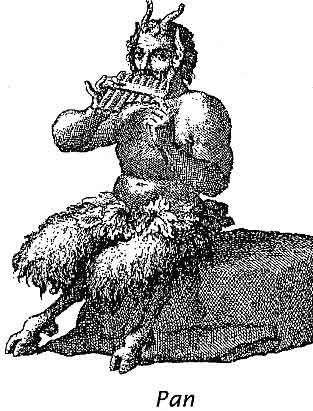














































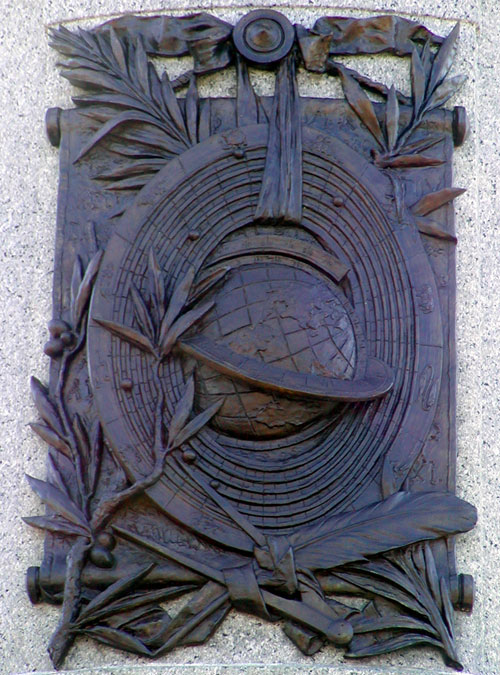







































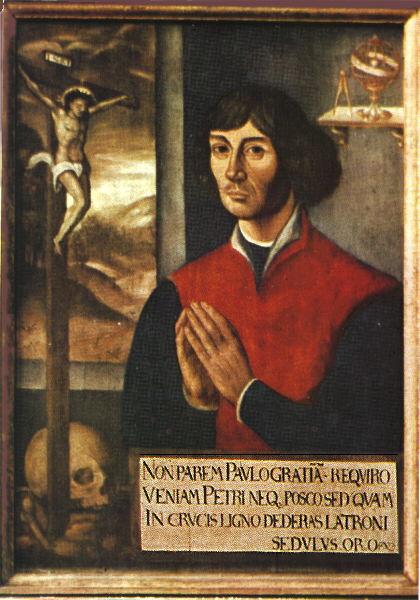















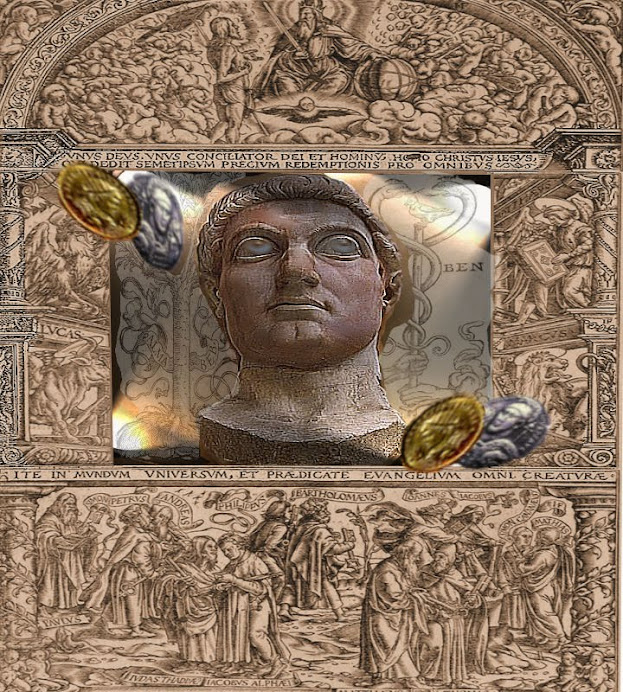













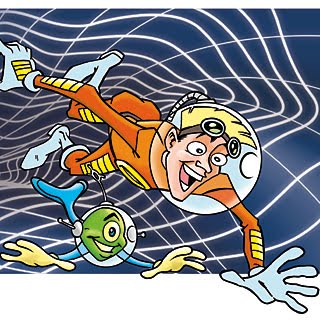





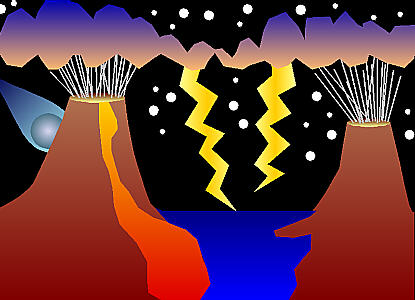


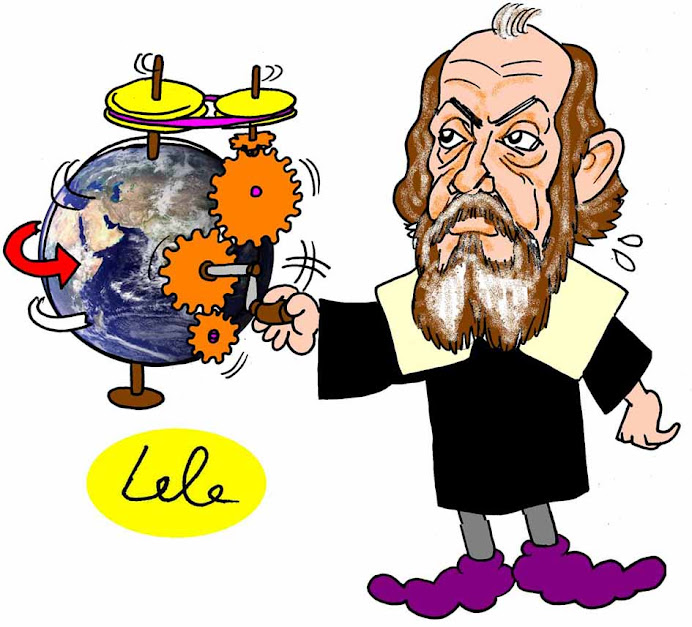









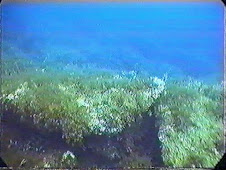



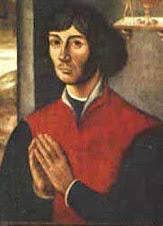.jpg)

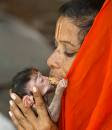

















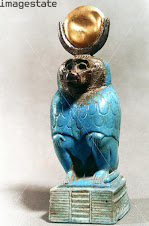








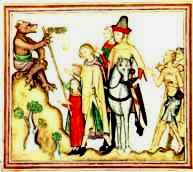

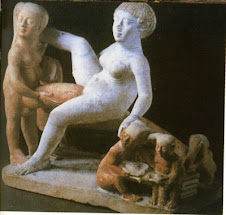

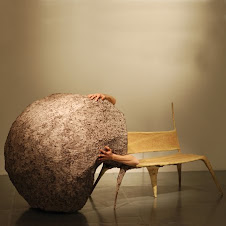









.jpg)





























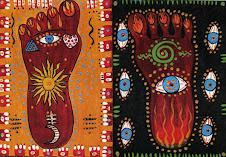
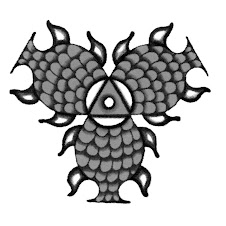











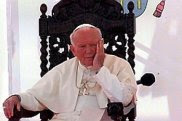

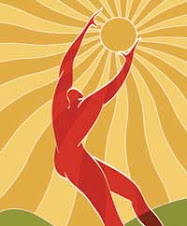


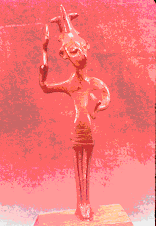










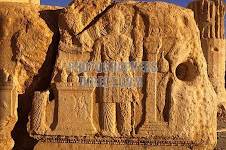
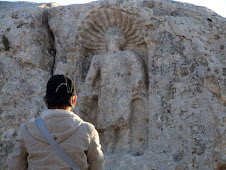






.gif)

















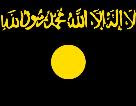



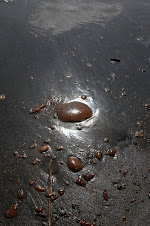









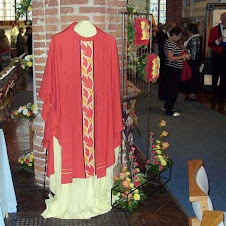


























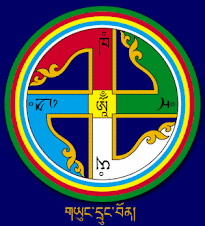

















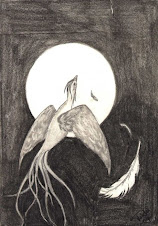





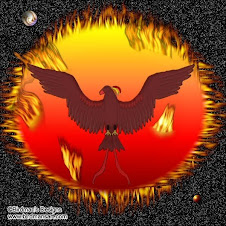

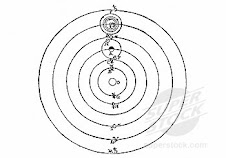

.jpg)













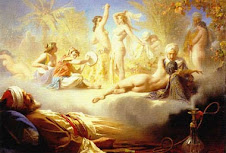
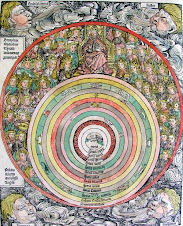












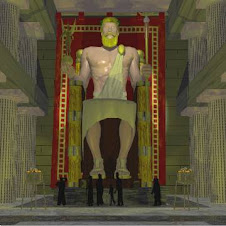





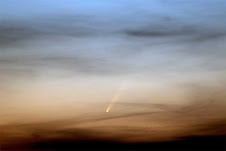












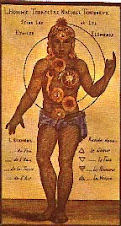
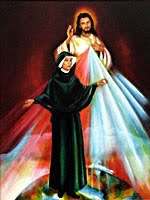
















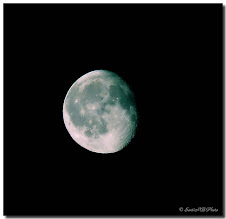




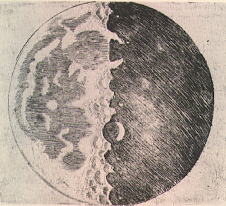


















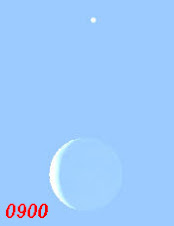

































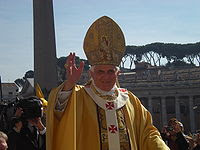

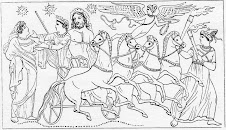
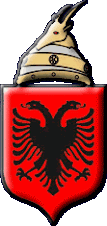







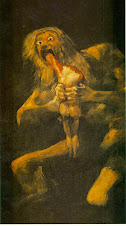




















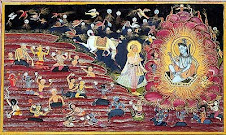

















++of+the+Sun+god..jpg)

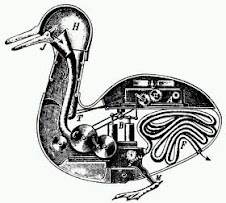
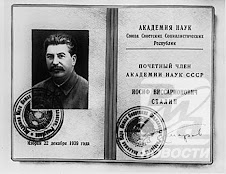







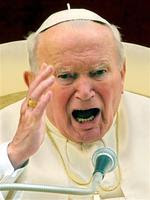


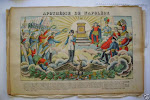



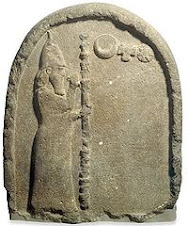





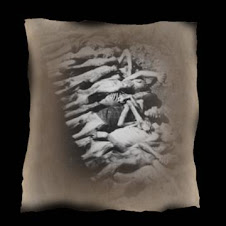




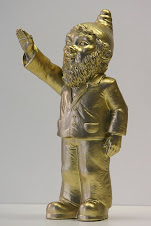
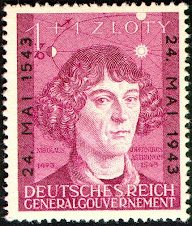








No comments:
Post a Comment